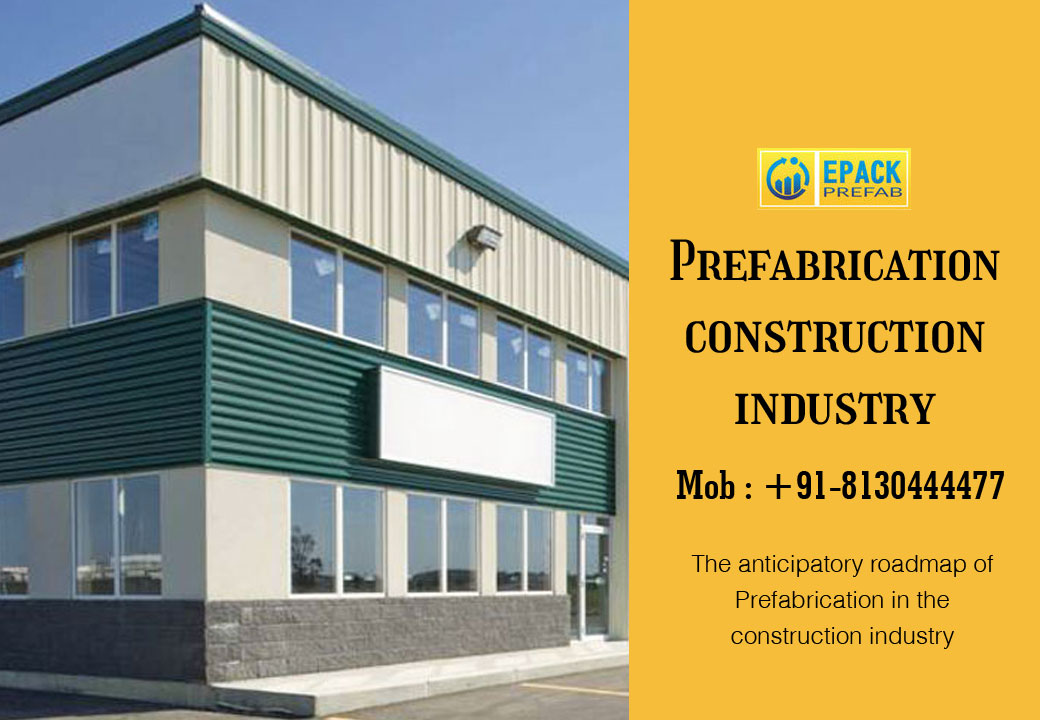Prefabrication is increasing prominence in the real estate sector. The advent of prefabricated homes in India has paved the door for innovative and technologically sophisticated construction and design practises. This strategy is applicable to the construction of all types of buildings, including high and low rises, rental residences, and megacities. To achieve complex designs and luxury structures, architects utilise prefabricated techniques.
According to market data, the expected urban housing deficit in India is 18.8 million homes. Consequently, prefabrication can be utilised to create homes three times faster. Currently, multi-story buildings may be completed in 90 days and utilise 20% less material and space than conventional building and construction methods.
The Method of Prefabricated Construction
Prefabrication is a process whereby structures are produced by mixing components that have been cast off-site in a factory or constructing site and also are then brought to the construction site for installation. The components are assembled quickly and easily on-site. From windows, wall panels, and stairways to ceiling panels, roof coverings, and the development of entire building systems, nearly every section of a structure can be outfitted with custom-installed components.
Implementing the prefabrication approach requires substantial planning because it is carried out in highly controlled production environments. Important structural components can be manufactured off-site and then delivered directly to the construction site for assembly. In this instance, the entire structure is raised and built on-site.
Advantage or Detriment?
Reduced construction time and environmental friendliness are two advantages of a prefabricated home. Due to the fact that the components are manufactured in a controlled environment, it offers eco-friendly benefits such as site security, waste monitoring, enhanced air quality, and quality control. The unique construction technique of prefabrication conserves both time and space. Prefabrication, where hollow slabs and wall surfaces are created, can be combined with new technology to make structures that are lighter, easier to instal, and have a significantly longer shelf life.
Prefabrication is one of the most trustworthy and cost-effective methods. Instead of being erected on-site by carpenters, pieces of a prefab house are mass-produced off-site and shipped to the construction site at significantly reduced costs. In addition to being more economical than conventional residences, prefabricated structures, often known as modular real estate, are safer. They are much more robust to natural disasters like earthquakes and tsunamis.
Due to the extensive computerization of prefabrication processes, human error is practically nonexistent. It is possible to restrict the number of vehicles and tools required on the construction and building site with adequate planning. Assembled homes are versatile and may be easily transported, utilised, and disassembled. It has the same durability, which is a feature.
Although the initial expense of utilising prefabricated materials may be higher, there are key benefits. Customers and programmers alike benefit from quicker execution and on-time product delivery. In addition, consumers have access to a large array of styles and patterns.
The Roadmap of Prefabrication
Prefabricated housing can be a realistic option in developing economies such as India, where the benefits outweigh the negatives. Long held is the notion that prefabricated homes are of lesser quality, but new developments may alter this perception and grow the market.
Numerous organisations utilise prefabrication because it is essential to success in the construction and building industries. Due to India’s rising interest in this type of building, international makers of prefabrication equipment and components have entered the country. There is an urgent need for more domestic market participants to take an active interest in prefabricated homes, as well as for the general populace to get a greater understanding.
The prefabrication technology serves a specific purpose in advancing the Indian real estate business to the next level. It will transform the future of the Indian real estate industry.



